Click on images to enlarge
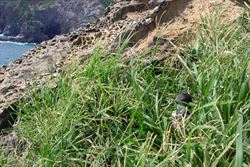
coastal infestation in Hawaii (Photo: Forest and Kim Starr, USGS)
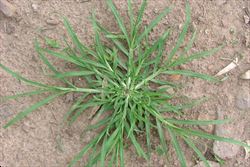
habit prior to flowering (Photo: Sheldon Navie)
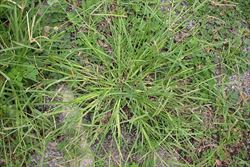
habit in flower (Photo: Sheldon Navie)
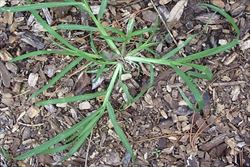
stems and leaves (Photo: Sheldon Navie)
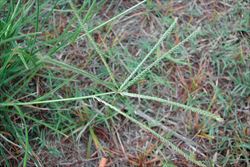
seed-head (Photo: Sheldon Navie)
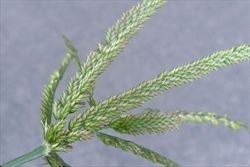
close-up of seed-head (Photo: Sheldon Navie)
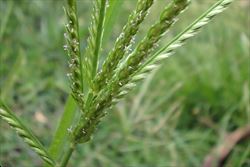
young flower spikelets (Photo: Sheldon Navie)
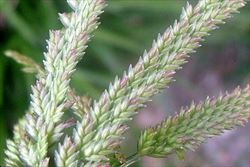
close-up of immature flower spikelets (Photo: Sheldon Navie)
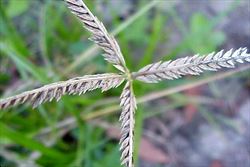
mature seed-head (Photo: Sheldon Navie)
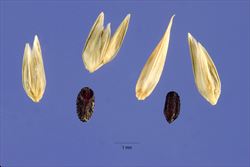
close-up of seeds (Photo: Steve Hurst at USDA PLANTS Database)
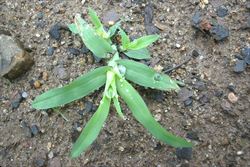
seedling (Photo: Sheldon Navie)
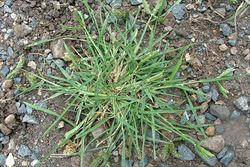
the very similar goosegrass (Eleusine tristachya), with shorter and broader seed-head branches (Photo: Sheldon Navie)
Scientific Name
Eleusine indica (L.) Gaertn.
Synonyms
Cynosurus indicus L.Eleusine indica (L.) Gaertn. var. monostachya F.M. BaileyEleusine japonica Steud.Eleusine marginata Lindl.Glensine marginata Lindl.
Family
Gramineae (South Australia)Poaceae (Queensland, New South Wales, the ACT, Victoria, Tasmania, Western Australia and the Northern Territory)
Common Names
bullgrass, crab grass, crabgrass, crowfoot grass, crow's foot, crowsfoot, crow's-foot grass, crowsfoot grass, dog grass, fowlfoot grass, grass, goose foot, goose grass, goose-grass, goosegrass, Indian goose grass, Indian goosegrass, irongrass, silver crabgrass, wild finger millet, wire grass, wiregrass, yard grass
Origin
This species is widespread throughout tropical and sub-tropical regions of the world. Its exact origin is obscure, but it is thought to have come from Africa and Asia.
Naturalised Distribution
Crowsfoot grass (Eleusine indica) is widely naturalised in Queensland, New South Wales, Victoria, the Northern Territory and Western Australia. It is also naturalised in the southern parts of South Australia, in the ACT, on several offshore islands (i.e. Lord Howe Island, Norfolk Island, Christmas Island and the Cocos Islands) and is sparingly naturalised in Tasmania.
Notes
Though crowsfoot grass (Eleusine indica) is primarily regarded as a weed of agricultural areas and habitation, it is also seen as an environmental weed in parts of Queensland and New South Wales. It is listed in the top 200 environmental weeds in south-eastern Queensland and also appears on environmental weed lists in the wider Sydney and Blue Mountains region in New South Wales.
This species generally invades disturbed habitats in natural areas and the margins of conservation areas. For example, it is present along roads and powerline corridors that traverse the wet tropics world heritage areas in northern Queensland. It is also a weed of marshes, stream banks and coastal environs and has recently invaded the Five Islands Nature Reserve, a group of five small islands clustered off the coast of Port Kembla in south-eastern New South Wales.

